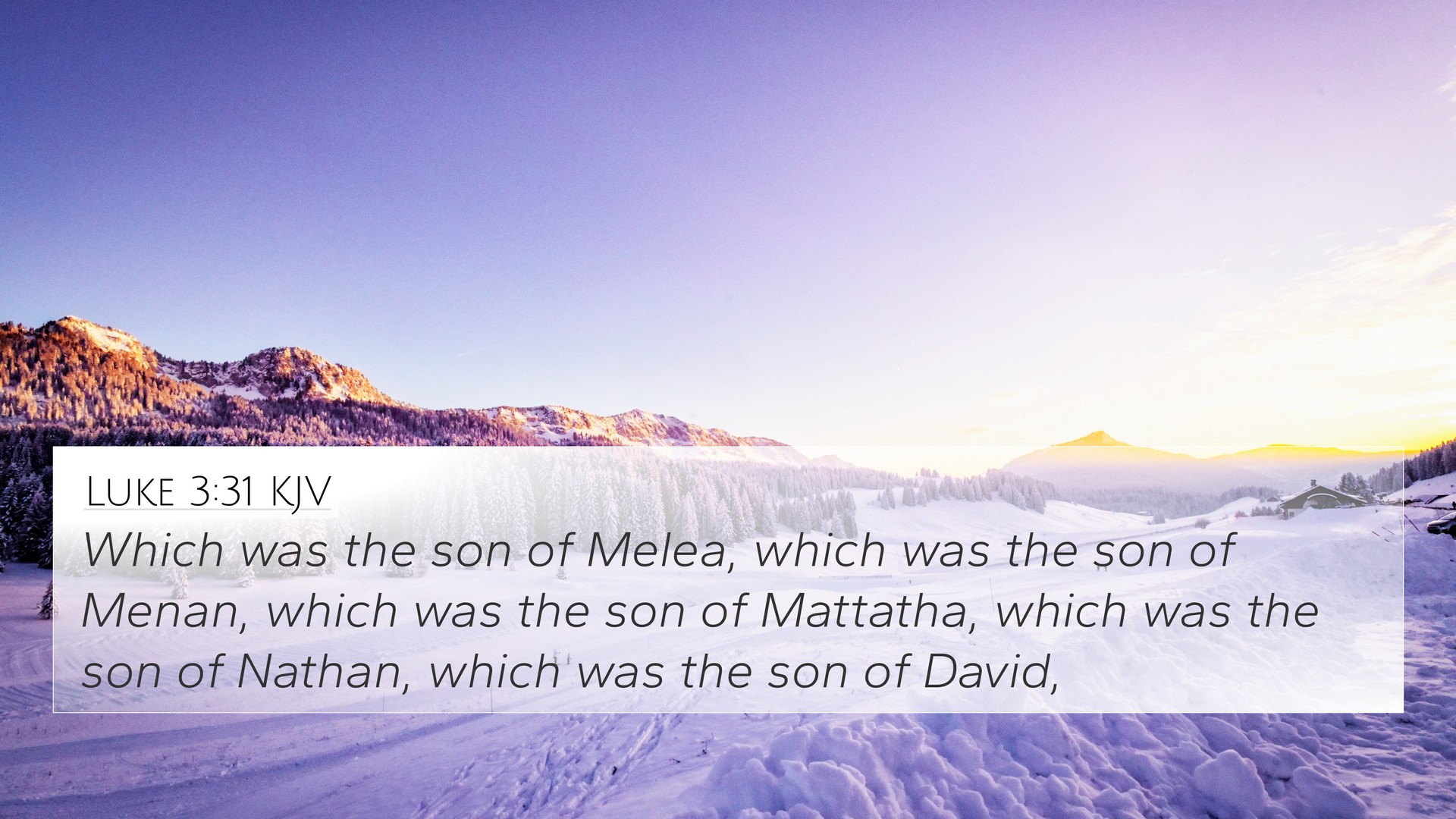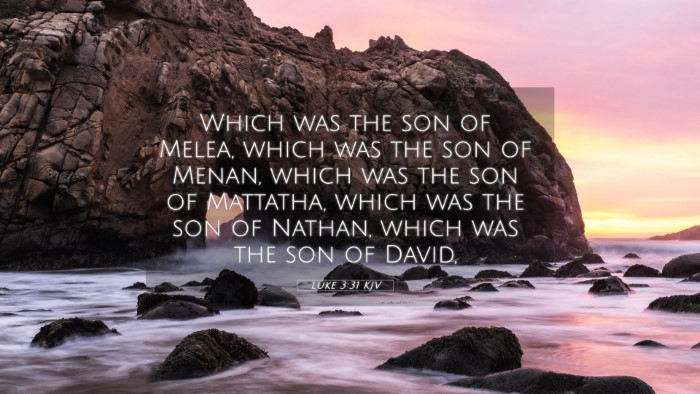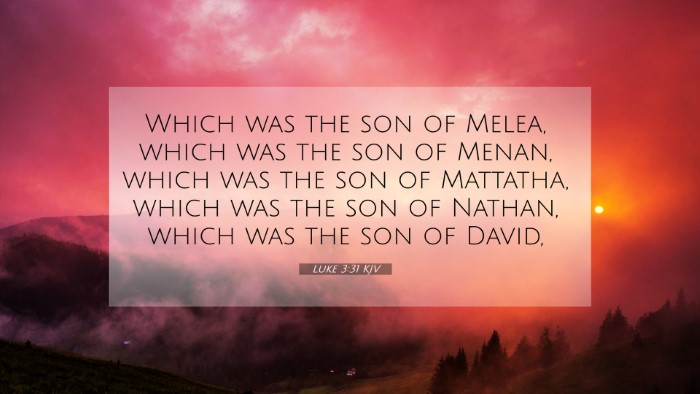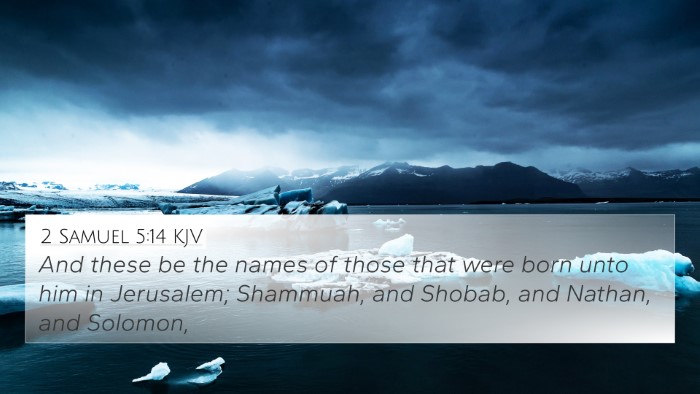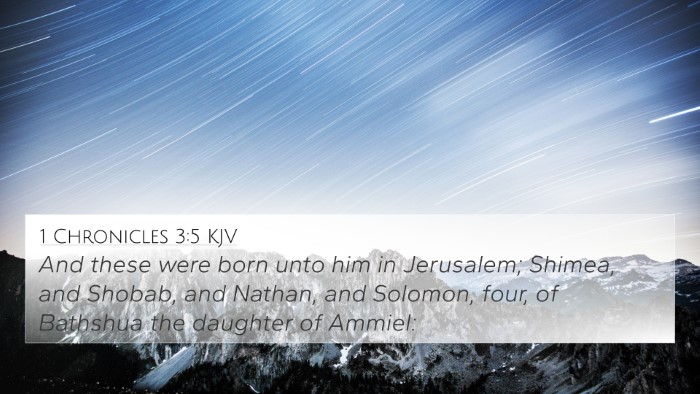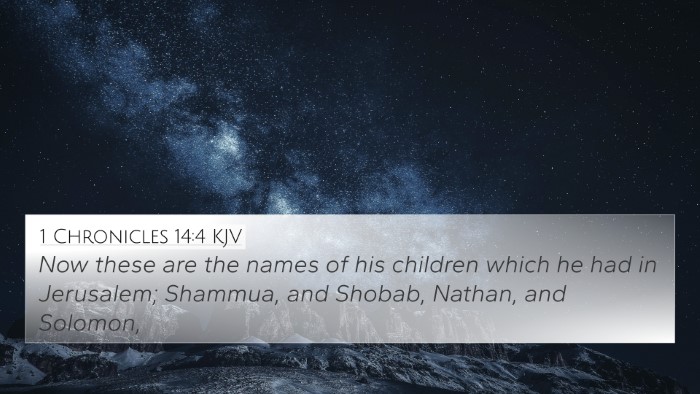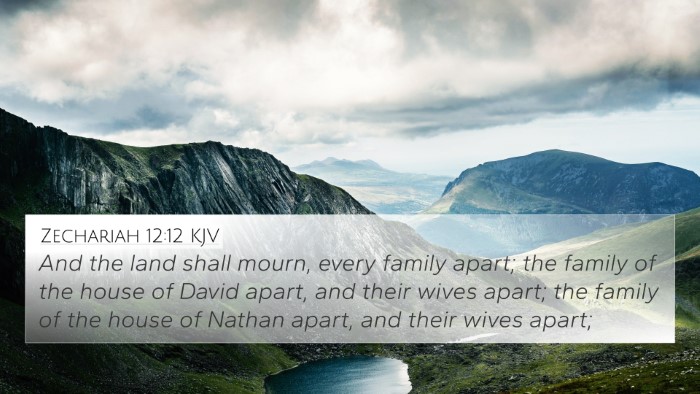Bible Verse Meaning Summary: Luke 3:31
Luke 3:31 reads: "The son of Melea, the son of Menna, the son of Mattatha, the son of Nathan, the son of David." This verse is part of the genealogy of Jesus as presented in the Gospel of Luke. It illustrates the connection of Jesus to David, affirming His rightful place within the lineage of Israel's greatest king.
Insights from Public Domain Commentaries
Matthew Henry's Commentary
Matthew Henry emphasizes the significance of Christ's genealogy, linking Him directly to David, which fulfills Old Testament prophecies about the Messiah coming from David’s line. Henry points out that this lineage reinforces the idea of Jesus as a man of humble origins yet of royal descent. The mention of Nathan, the son of David, highlights the fulfillment of the promise that God made to David, indicating that the Messiah would come from his house.
Albert Barnes' Notes
Albert Barnes comments on the genealogical aspect found in Luke's Gospel as providing a systematic account that demonstrates Jesus' legitimate claim to the throne. He stresses the presence of Nathan over Solomon in the genealogy, suggesting a different path to kingship that reflects humility over the typical expectations of royal lineage. Barnes notes the significance of this divergence as a means to show that God’s chosen can rise from unexpected avenues.
Adam Clarke's Commentary
Adam Clarke discusses the importance of presenting a complete genealogy that connects Jesus not only to David through Nathan but also emphasizes the broader significance of His heritage. Clarke underlines that this genealogy serves the purpose of establishing Jesus’s identity and His role in redemptive history. By tracing back to Nathan, Clarke notes, Luke highlights the universal aspect of Christ's mission, showing that He is not solely a king for Israel but for all humanity.
Cross-References and Connections
This verse correlates with several important scriptures that underline the significance of Jesus's lineage:
- Matthew 1:1-16 - The genealogy of Jesus in Matthew which includes different lineage aspects.
- 2 Samuel 7:12-16 - God's promise to David concerning his line and the establishment of a kingdom.
- Isaiah 11:1 - The prophecy regarding a shoot coming from the stump of Jesse, signifying the lineage of David.
- Jeremiah 23:5 - The promise of a righteous branch to rise from David's lineage, referring to the Messiah.
- Acts 13:23 - Mention of God raising Jesus from the descendants of David, affirming His Messiahship.
- Romans 1:3 - Paul’s declaration of Jesus as descended from David according to the flesh.
- Revelation 5:5 - The Lion of the tribe of Judah, referring to David’s lineage and the victorious Messiah.
Thematic Connections
Luke 3:31 sits at the intersection of several crucial Biblical themes:
- Messianic prophecy - The lineage confirms Jesus as the prophesied Messiah.
- Fulfillment of promises - It signifies the faithfulness of God in fulfilling His covenant with David.
- Royalty and humility - Emphasizes the paradox of Jesus’s royal heritage and humble beginnings.
- Universal mission - Indicates that the Gospel is for all, not confined to just the Jewish people.
Conclusion
In summary, Luke 3:31 is an essential verse that not only fits within the genealogy of Christ but opens avenues for deeper comparison and understanding of the scripture. The teachings from Matthew Henry, Albert Barnes, and Adam Clarke enrich our appreciation for the interconnectedness of the Bible, highlighting vital themes and reaffirming Jesus’s role as the fulfillment of the Old Testament promises through His lineage. Understanding how to utilize tools such as a Bible concordance and Bible cross-reference guides allows for deeper studies to uncover the rich tapestry of connections between verses like this. By exploring Biblical cross-references, one can gain insights that reveal God's overarching story of redemption and the significance of Jesus as the Savior.
